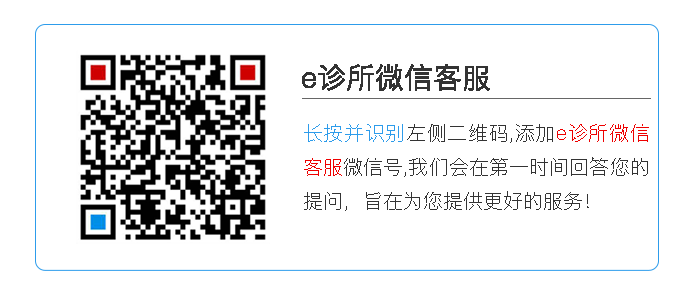
Source:“Clinical Notes on Traditional Chinese Medicine”, People’s Health Publishing House
Chief Editor: Wang Bin
Editor: Bai Zhi (White Atractylodes)
This article is copyrighted by the rights holder.
Slippery Pulse
The slippery pulse (滑脉, hua mai) is characterized by a smooth and flowing sensation, akin to beads rolling under the fingers (《脉经》). It feels as if it is about to slip away. (The slippery pulse indicates an excess of Yin Qi, hence it flows smoothly like water. The pulse is the vessel of blood; when blood is abundant, the pulse is slippery, thus the kidney pulse is suitable; when Qi is abundant, the pulse is tight, thus the lung pulse is suitable. The “Pulse Classic” states: when pressed, it sinks; the three positions feel like beads, neither advancing nor retreating. This does not differentiate between floating slippery, sinking slippery, or the size of the slippery pulse, which is now being corrected.)
Notes:
The description of the slippery pulse as resembling beads is undoubtedly correct, but upon closer examination, the characteristics of the slippery pulse can vary.
For individuals with a deficiency in the spleen and stomach, after normal eating, a slightly larger pulse may appear, and after a full meal, the right guan position may show a slippery pulse, but generally it is slippery yet not solid, dispersing upon heavier pressure.
If sticky and indigestible foods such as zongzi (sticky rice dumplings) are consumed, the right guan pulse may appear slippery yet more solid.
In women, the right chi pulse often shows a slippery characteristic before menstruation; upon first reading the pulse literature, it may be difficult to distinguish between a pregnancy pulse and a slippery pulse.
With clinical experience over time, a clear distinction between the two types of slippery pulses has been observed. The pre-menstrual slippery pulse appears as a round bead, while the pregnancy slippery pulse seems to contain a small bead within the chi pulse, which does not disperse upon pressure, giving a sensation of movement under the fingers. In terms of formation mechanism, the pre-menstrual slippery pulse is caused by blood gathering in the uterus.
In contrast, the pregnancy slippery pulse is the result of the union of paternal essence and maternal blood forming an embryo in the uterus, which is perceived as a tangible “foreign object” by the body. Therefore, although both are classified as slippery pulses, the tactile sensation differs.
Additionally, based on my limited clinical observations, not all pregnant women exhibit a slippery pulse in the chi position, which may relate to their fundamental constitution.
Clinically, there is a type of pulse that feels more stagnant than the slippery pulse; if we compare the pulse vessel to a water pipe, it seems that the pipe is clogged with impurities, causing the water to flow poorly.
Mr. Wang Guangyu proposed the concept of “turbid pulse” in his “Precision Pulse Diagnosis Teaching Record”, which I believe aligns well with modern clinical observations.
Due to changes in modern dietary structures, many foods that are difficult to metabolize are consumed, which the body cannot recognize or metabolize, leading to stagnation and forming a turbid pulse pattern.
For individuals with a turbid pulse, if phlegm and stasis are not addressed first, the use of general medications often fails to reach the disease site. Understanding and managing the turbid pulse is a crucial foundation for treating many difficult and stubborn conditions.

Body Condition Poem: Slippery pulse like beads, flowing smoothly yet still forward. Do not mistake slippery for the same category; the pulse rate should be observed in intervals. (Slippery is like beads, while the pulse rate is six beats.)
Notes:
The slippery pulse refers to the body and pulse force, while the rapid pulse refers to the pulse rate; these should not be difficult to distinguish.
However, in cases of acute bronchitis, when phlegm-heat obstructs the lungs, if accompanied by fever, the right cun pulse may show a slippery and rapid pulse pattern. The combination of slippery and rapid pulses can make the slippery sensation more pronounced.

Main Disease Poem: Slippery pulse indicates a decline in Yang Qi, phlegm causes numerous diseases, and food leads to disasters. Above leads to vomiting and below accumulates blood; women’s pulses are regulated, indicating pregnancy. Slippery pulse at the cun indicates phlegm causing vomiting, sour regurgitation, or cough.
When the guan is obstructed by food, liver and spleen heat, thirst, dysentery, and painful urination should be examined at the chi position. (Slippery indicates phlegm and fluid; floating slippery indicates wind-phlegm; sinking slippery indicates food-phlegm; slippery and rapid indicates phlegm-heat; slippery and short indicates retained food.)
The “Pulse Classic” states: Guan slippery indicates stomach cold, chi slippery indicates the navel feels like ice. This contradicts the “Pulse Classic” which states that guan slippery indicates stomach heat, chi slippery indicates blood accumulation, which is contrary to the essence of women’s menstrual disorders.)
Notes:
“Slippery pulse indicates a decline in Yang Qi, phlegm causes numerous diseases, and food leads to disasters”; this sentence highlights the principle of slippery pulse formation, where the decline of Yang Qi leads to the inability of the organs and meridians to process phlegm and turbid substances, resulting in stagnation in the meridians and organs, which is reflected in the pulse pattern.
However, whether it is phlegm or food, the condition is still mild, not yet accumulated, hence the slippery sensation is displayed.
From a positional perspective, the left pulse pertains to blood, while the right pulse pertains to Qi. The slippery nature of the right pulse often relates to food stagnation and phlegm coagulation, while the slippery nature of the left pulse is often due to blood stasis and phlegm turbidity, which is more challenging to manage.
Even if the right pulse is slippery, over time it may turn turbid, often indicating the presence of tangible foreign objects in the organs and meridians, such as turbid findings in the right guan pulse in patients with breast tumors or malignant lymphomas.
The left cun pulse being slippery often relates to phlegm-stasis in the heart, with patients frequently experiencing insomnia and vivid dreams. This type of insomnia is often characterized by difficulty falling asleep. In the evening, Yang Qi is obstructed by phlegm-stasis above, preventing the heart fire from descending, thus causing difficulty in falling asleep.
I have observed that patients with a slightly turbid left cun pulse (the so-called point turbid, which seems to indicate that there are several scattered small dots within a certain pulse vessel, differing from the overall bead-like formation of a purely slippery pulse) are often advised to undergo thyroid ultrasound, and many are found to have thyroid nodules.
The left guan pulse is often slippery in cases of fatty liver; if further examination reveals a turbid pulse that does not disperse upon pressure, it belongs to phlegm coagulation in the liver meridian, corresponding to various diseases, including those in the breast and uterus.
Professor Yao Meiling proposed in “Sixteen Lectures on Clinical Pulse Studies” to replace the concept of “pulse pattern indicating disease” with “mechanism of pulse pattern formation”. I strongly agree; the pulse is used to serve the differentiation and medication, and using the pulse to indicate disease can gain the patient’s trust, but TCM pulse diagnosis corresponds more to “syndrome” rather than “disease”. Using the pulse to address “syndrome” can provide more ideas for clinical medication.
The right guan pulse being slippery and dispersing upon pressure often relates to food accumulation in the spleen and stomach, commonly seen in children. In adults with spleen and stomach deficiency, after normal eating, the right guan pulse may appear slightly larger; after consuming greasy foods, a slippery pulse may be observed, indicating difficult transformation of accumulation, and even a turbid pulse may be seen.
I once observed a turbid pulse in the right guan of a patient with breast tumors, resembling coix seed, which did not disperse upon pressure. Initially, the patient was nearly unable to walk without collapsing. After two years of treatment with herbs to strengthen the spleen, resolve phlegm, and disperse masses, the right guan pulse’s hard mass dissipated, and the pulse became weak with a turbid and tight quality. Various biochemical indicators returned to normal, and physical strength was restored to normal.
Clinical experience shows that a turbid pulse in the right guan is easier to disperse compared to the left guan. In the right cun, it often indicates phlegm-heat obstructing the lungs, which is also easier to disperse compared to the left guan.
The slippery chi pulse is seen in menstrual pulses, pregnancy pulses, and increased vaginal discharge, caused by the gathering of essence and blood in the lower jiao. I have observed during the treatment of female sexual dysfunction that after using kidney tonifying herbs, the right chi pulse exhibited a slippery quality, and the patient reported a resurgence of sexual desire after taking the medication, which may also serve as a standard for treatment efficacy.


This article is sourced from: Medical Community Online. Respect knowledge and labor; please retain copyright information when reprinting.The copyright of the content published in this WeChat account belongs to the relevant rights holders. If there is any infringement, please contact us for deletion. The content in this article is a reprint and only represents the author’s personal views, unrelated to the e-clinic platform, and is for clinical thought reference only. The various prescriptions and formulas mentioned are for reference and learning purposes only and should not be used as prescriptions. Please do not use them blindly. This platform does not bear any responsibility arising from this!


